Ricoh @ CP+: Rewarding K-1 fans with a major upgrade, plus what comes next after the K-3 II?
posted Monday, April 16, 2018 at 9:15 PM EDT

Our CP+ 2018 interview series continues this week with a visit to the booth of electronics and imaging giant Ricoh. The company recently launched its second full-frame digital camera, the Pentax K-1 Mark II, and also launched a upgrade program the likes of which we've never seen in the industry before, allowing K-1 owners to turn their existing body into a K-1 II for a relatively small fee. With the K-1 II being the most recent news for the Pentax brand, our discussion not surprisingly started there, but if you're not a full-frame shooter, fear not.
We also spoke with Ricoh about its future plans for APS-C, as well as some of the company's other digital product lines, including medium-format, the Q-mount, the Ricoh GR series and plenty more besides. And for good measure, we even did our part to give the company a chance to debunk a really persistent rumor that's been doing the rounds on the internet (and occasionally popping up in the mainstream media) for a fair few years now. Speaking with Imaging Resource founder and publisher Dave Etchells were two senior executives from Ricoh's Tokyo headquarters. Dave was fortunate to be able to meet with Takashi Arai of the Product Planning Department, Product Development Center, Smart Vision Business Group, and Hiroki Sugahara, General Manager of the Marketing Communication Department, Global Sales & Marketing Center, Smart Vision Business Unit, both part of Ricoh Co. Ltd.
Without any further ado, let's get right down to the interview!
Dave Etchells/Imaging Resource: The Pentax K-1 Mark II is very close in design to its predecessor, but it adds an accelerator unit and we're curious about that. The press materials just said it's an accelerator unit, but didn’t explain further. What sort of functions were you able to move into that chip? And is it a pre-processor that takes data from the sensor, or does the sensor data come into the main processor and then the accelerator works on the side?
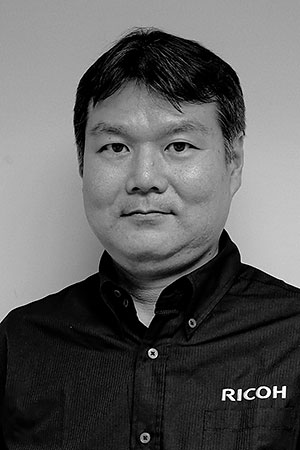
Product Planning Department
Product Development Center
Smart Vision Business Group
Ricoh Co. Ltd.
Takashi Arai/Ricoh: The accelerator unit initially processes the output signal from the sensor, meaning that the accelerator comes right after the image sensor. And then it conveys it to the PRIME IV -- PRIME IV is the name of our image processing engine -- and then an accessory unit does a kind of signal processing which cannot be obtained by just software processing mechanism without degrading the resolving performance of the sensor.
And then the PRIME IV was also redesigned. The algorithm within the PRIME IV from the K-1 and K-1 II is different. Because the signal for the PRIME IV is already [lower-noise than that in the original K-1]. Better signals into the PRIME IV in the K-1 II means it can be more specifically optimized just to reduce the noise, which already has a higher level of signal to noise ratio. And as a result, so, the highest ISO level [819,200] and also improved S/N ratio on normal ISO range has been achieved.
DE: Ah, so it sounds like the accelerator is mainly doing noise processing to improve the quality of the data going to the PRIME IV, and so now the PRIME IV’s not having to do the very low-level processing, it’s able to do higher-level noise processing itself.
TA: Yes, sure. That's right, because the output which comes out from the accelerator to the PRIME IV is already high-quality.

DE: And so now the PRIME IV can do even higher-level things.
TA: Sure.
DE: And I'm assuming that the data coming from the sensor is still digital going into the accelerator.
TA: It's digital.
DE: OK. That makes sense to me, because otherwise you would be changing the sensor and everything, and I don't think that's the case. And so my question two is already answered, that the accelerator unit would have benefits both for raw images and also for JPEG, because it's at the very beginning as the data comes off of the sensor.
TA: Right.
DE: A very minor question about one of the specs for the K-1 Mark II: One of our very sharp-eyed editors noticed that the Mark II’s burst performance is unchanged except in APS-C mode, where it’s 0.1 frames per second slower. Was that just a typo, or was there actually some change?
TA: <laughs> It's not it's not a mistake, it very slightly changes the speed of the processing, due to the accelerator in between the image sensor and PRIME IV. But since the negative impact is so slight, you almost cannot feel it.
DE: Yeah, it’s very hard to tell.
TA: But if we count precisely, then just 0.1 fps change has been generated.
DE: Yeah. And we're very interested in the new Dynamic Pixel Shift Resolution feature that lets you use Pixel Shift handheld. What made that possible? Does the accelerator have any impact on that, or is it something else in the camera like a more accurate accelerometer or gyro?
TA: I'm sorry to say we can’t give any specific technical details about this. We still have some things that are very much proprietary, patent things, so we have to keep quiet about that, sorry to say. <laughs>
DE: Oh, you’re waiting for patent! We will have to watch for the patent filing, and then we can see. Is that function something that could be enabled in the K-1 with a firmware update, do you know?
TA: This will be available if you [upgrade] the K-1 to K-1 II.
DE: With the new board and everything
TA: That’s right.
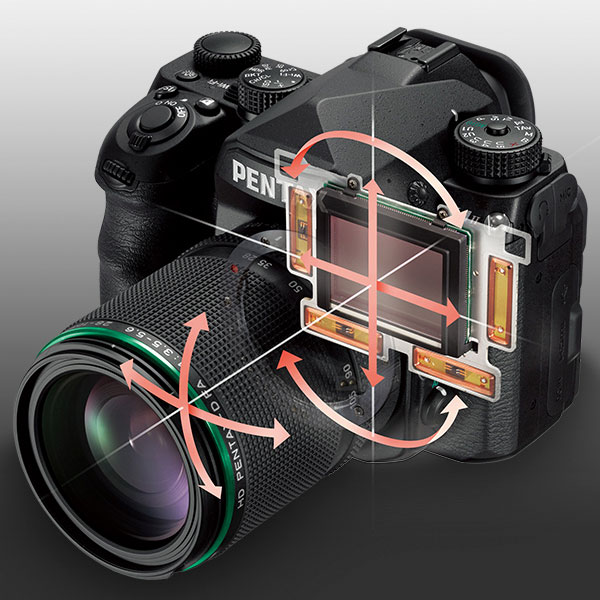
DE: So it does need new hardware to do that.
TA: That functional difference won’t happen if you update the K-1 to K-1 II. The two cameras will work like the same camera.
DE: After the update, yeah. It basically completely turns a K-1 into a K-1 Mark II.
TA: That’s right.
DE: Yeah, we were very happy to see that! Even though there's a significant cost for people, I think it's good that you're offering users that ability to make that upgrade.
Another technical question about the Dynamic Pixel Shift: We're wondering, are the four frames that are captured for that done using electronic shutter like in standard Pixel Shift Resolution, or is it a mechanical shutter now?
TA: It's a mechanical shutter.
DE: It’s a mechanical shutter now, ah! Okay, because the original pixel shift was electronic. Interesting!
And that answers the next questions; we were wondering if it was electronic and the camera moved, you would have rolling shutter. But with the mechanical shutter, then we assume that it would be the same 4.4 frames per second to take each of those four shots as for regular still imaging. In other words, 0.9 seconds to capture all four shots. Is that correct?
TA: Yeah, the mechanical is slower than electronic, yes.
DE: Was the upgrade from K-1 to K-1 Mark II planned for a long time when you were developing the product, or was it something that you realized “Oh, we could do this for existing customers!” and so you made that decision after the K-1 Mark II was more or less finalized?
TA: The idea exists actually from the very, very beginning, yes. The idea being that the K-1 is our flagship, and our product planners wanted the camera to be in the hands of owners for a longer time. But it is also true that later is better in the world of the digital, and actually the high ISO performance of the Pentax KP was better than a K-1.
DE: Ah, I see. It was a later product, so newer electronics.
TA: Yeah, always newer is better. And to respond to that kind of paradox ...
DE: Yeah, where you have a lower model performing better than the flagship...
TA: ...we thought we should do something to keep our fans happy.
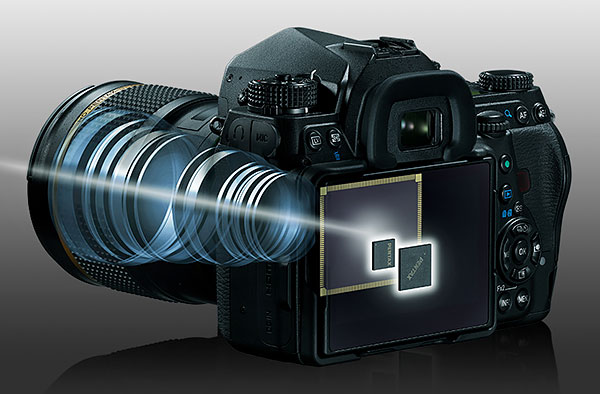
DE: To satisfy them and give them an option.
TA: Yes. And yeah, due to those reasons, actually the idea has been in our mind long-term.
DE: For a long while, you had been thinking you wanted to preserve people's investment in the high-end, in your flagship, yes.
TA: But on the other hand, how to implement that in reality, how to realize it, was another story.
DE: Yeah, because I'm thinking it would be very difficult. I mean, you really have to take all of the camera apart, I would think, to get to the board. I imagine that is not a highly profitable thing for you. It’s probably more like you may even lose money, or just break even, because I think that would be very expensive to do or very time-consuming.
TA: Yes.
DE: I know you're probably still just setting up what the procedure will be, but do you know how long it will take if someone decides “Yes, I want the upgrade” and they send their camera in... Will it be in a week, two weeks, do you have any idea yet?
TA: It depends on the country or area to area, so we cannot reply at the moment, sorry.
DE: Yeah, and that's all being established now, probably. You haven't figured out all the details, I would imagine.
TA: Yes. So, we would reply to our customers “Please ask the service center in your region.”
DE: Okay. And what do you think the response will be to that upgrade? Do you think many people will upgrade their cameras? Do you have any idea what the response is going to be like?
TA: So far, the response is quite positive, yeah, but we still don't know yet how many of the K-1 users will do that upgrade or not.
DE: Yeah, many people would say “Oh, that's great!”, but then maybe not so many people would actually spend money, so... Maybe it's a good thing if you get the benefit of people appreciating it, but then you don't necessarily have to have many thousands of cameras to upgrade. <laughs>
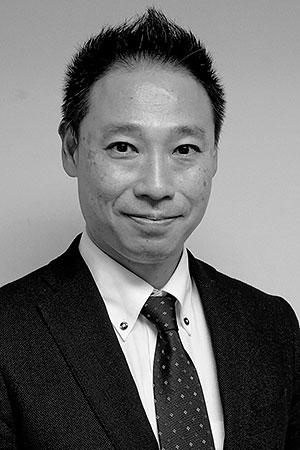
General Manager
Marketing Communication Department
Global Sales & Marketing Center
Smart Vision Business Unit
Ricoh Co. Ltd.
Hiroki Sugahara/Ricoh: It's just a week or so since we have announced this service, so we haven’t collected enough information about the number of users who will upgrade.
DE: This is a question I think from the same editor. One of our main editors is a huge Pentax fan...
TA: Mr. Tomkins.
DE: ...and he’s had many... Mike Tomkins, yes! He’s had many Pentaxes himself. And he’s curious, that’s some fairly expensive hardware that you're taking out. When you upgrade a K-1, is there any use for that which comes out? Could it become spare parts for other K-1 bodies, the board that you remove? I assume that it's actually removing the entire board, or is it that the board gets upgraded with new components?
TA: The complete board will be replaced.
DE: And what happens to the old board which comes out, is there any value to it? Does it get used for anything?
TA: Actually, I don’t know.
DE: It’s probably sent to an electronics recycler, I’d guess. We understand that you've improved the continuous autofocus tracking in the Mark II. Can you give us any idea of the scope of that improvement? You know, how much it's improved or is it improved for particular use cases, you know, particular types of subjects? And to what extent does that rely on the new hardware? Could some of those improved algorithms come to the original K-1 with a firmware update?
TA: Regarding the autofocus performance, it’s upgraded mainly for the tracking performance of moving subjects. What we have done is there are two things.
One is optimization of the mathematical function to evaluate the subject, which is acquired from the AE sensor. Our AE sensor can evaluate some of the color differences of the subject, and the autofocus focus sensor can measure the distance between the camera and the object, and more intelligently utilize the information to track the subject.
That is one thing, and another is we have the AF hold function. AF hold function [determines] how long does the camera try to keep tracking, or how easy they abandon and try to restart the autofocusing.
DE: It’s kind of how sticky the autofocus is, yeah.
TA: That's right, yeah, the sticky level. And an improvement has been made on that function as well. Now, how sticky the sticky level is based on the focal length of the lens used.
DE: Oh, interesting!
TA: Previously we wouldn't include that focal length information into the stickiness of the autofocusing, but now that information is also utilized in the AF Hold and this eventually reduces unwanted focusing on the background when you shoot moving subjects. So those two are the main changes. There will be also fine-tuning of small things, but those two are the main things to improve the autofocus performance.
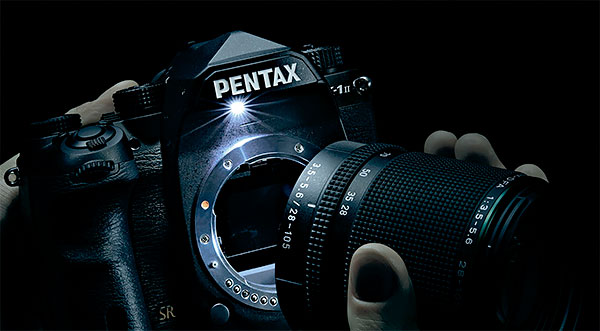
DE: So the autoexposure and autofocus sensors work more closely now, or more intelligently, and then you've incorporated focal length in the autofocus stickiness. So a longer focal length lens would be more sticky, and less quick to jump to something?
TA: I cannot say about that, but generally speaking the longer the focusing is more severe.
DE: With a long lens, if a subject passes in front it's maybe more out of focus than a short focal length. Maybe that would be one if you could ask, it'd be good to tell people that, okay, longer is stickier or longer is less sticky. I don't shoot sports enough that I would know which would be better, but that's very interesting.
Those functions - it sounds like those are not things that would depend on new hardware, so are those algorithm changes for autofocus something that could come to the original K-1 with firmware, do you think?
TA: Sorry I cannot, I have to check about that. [Ed. note: We've asked Ricoh to follow up on this, and will update with their answer once it arrives.]
DE: It’s been a while since your last APS-C flagship, the K-3 Mark II. Is your focus now, for higher-end, really going to be on full frame? Or will you continue to have an APS-C flagship, and will the K-3 series be improved upon?
You can't talk about future products, I know, as I see you smiling! It's kind of like I need to ask the question without asking it in a way that you can’t answer. I guess you could just say the question is, “Will you continue to have an APS-C flagship as part of your strategy?”
TA: We will continue to have the flagship which comes... Let's say it wouldn't be a straight successor of the K-3, but anyway, the flagship in the APS-C format -- even the K-series -- will come. And surely, that development or study for the development has already started. Yeah, we cannot say when, but it will come one day.
DE: So you are actively developing a new APS-C flagship.
TA: Yes.
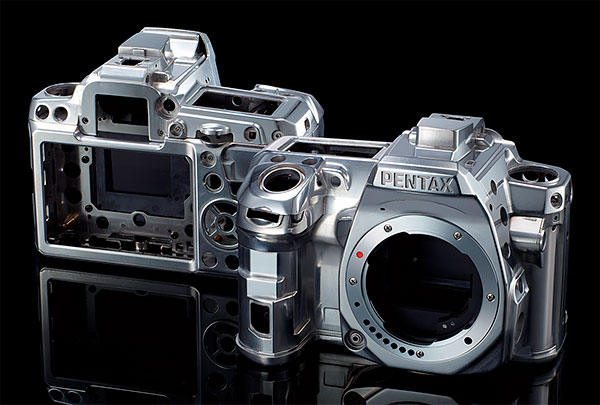
DE: OK, great. A question about lenses, now: From the road map for K-mount, it looks like the full-frame 50mm F1.4 SDM AW and sub-frame 11-18mm F2.8 will be the next launches. There's also a full-frame 85mm F1.4 on the drawing board, and four other full-frame lenses planned but not described yet.
It seems like currently, most of your attention on lens development is on catching up in full frame. Will that focus continue longer term, or are full frame and APS-C of similar importance?
HS: It’s both. We think that full frame and APS-C take the same importance. Both formats are important for the K-mount and Pentax, as well as 645. But specifically at the current moment, after we launched the K-1, the lack of good full frame lenses is always a complaint from customers. So far, we have focused our development resources into the development of those full frame lenses. But once we have that lineup adequate enough, then we will of course try to develop more APS-C lenses as well.
DE: Right. So you didn't historically have a full frame DSLR. Now that you have the K-1, you need to fill out that lens line.
TA: Yeah. And as you may know, there is already more variety of APS-C specific lenses under the Pentax brand compared to other brands. We currently have many dedicated APS-C lenses, and we are going to add some new APS-C format lenses such as the 11-18 millimeter. So the importance is the same, APS-C and full-frame.
DE: And APS-C already has a very full line of lenses.
TA: Yes, yes. Of course.
DE: We're curious how the K-1 was received in the market. Were sales up to your expectations, and since you came out with this flagship full frame DSLR, did you see a halo effect? Did it help sales on APS-C as well or have the K-1 sales come at the expense of fewer people buying your higher-end APS-C cameras?
HS: So far, yes, the response toward the K-1 is very good. And as you say, we can see some halo effect -- I mean the good impact -- also on the response to the APS-C cameras. Because the K-1 is more dedicated to the users especially for landscape photography or in tough situations like bad weather.
Since these are communicated well to the customers, they’re aware that Pentax is very much dedicated on landscape photography or tough situations. And since people started to know about that, it’s also positively affecting the sales of the rest of our product lineup.
DE: So people seeing that commitment on the high-end, and the fact that there’s sort of a range there for Pentax, it has helped make people aware of APS-C and also some of the areas you're strong in like weather-sealing and things, yes.
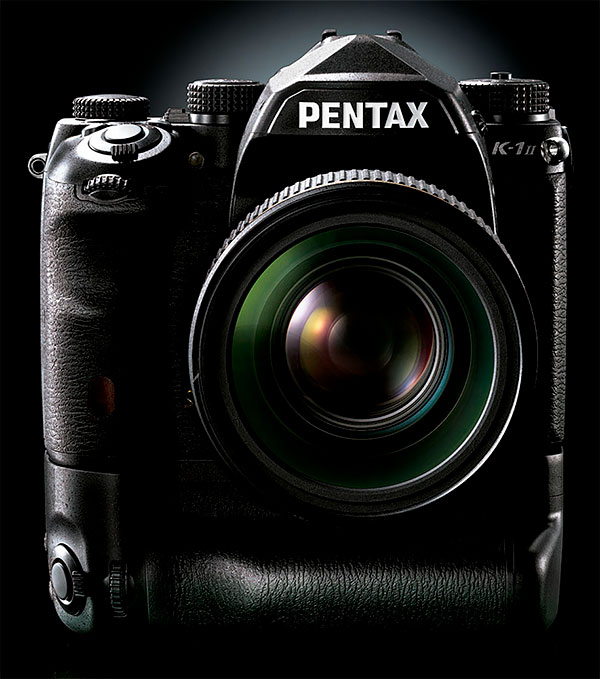
HS: Many owners of APS-C sensor bodies are going to buy full frame D FA lenses too. For example, the 70-200mm zoom lens, it’s a very good lens both for K-1 users and K-3 II users. APS-C body users such as the K-3 II, K-70 or KP, are welcome to our full frame lenses, D FA lenses. They can enjoy our lineup of full frame lenses also, together with the APS-C dedicated lenses.
DE: I wonder if many people are APS-C users who are thinking “Well, someday I may get full frame, so I will buy a full-frame lens now”? Or maybe they will even buy into the line saying, you know, “Someday I'll want a full frame, but for now I'll buy a Pentax KP and buy full frame lenses, instead.”
HS: And also, they can enjoy very, very good picture quality using just the center point of the image circle with full frame lenses. We can have very good picture quality with, for example, the new full-frame 50mm F1.4 lens.
DE: Some questions about the 645Z, now. It's been on the market almost four years, and for most of that time you've been a very strong choice for photographers that wanted something beyond full-frame, because it was it was very, very good, and very affordable. This was a couple of years ago now, but when we spoke in the past we were pleased to hear that your sales were really above expectations for it.
But now over the last couple of years, we've seen Fujifilm and Hasselblad come into the market with mirrorless medium-format cameras. Have you seen an impact on 645Z sales since then, and what do you see as its advantages over these other mirrorless rivals?
TA: Honestly speaking, when they launched their new products there was a small impact on our product, but not that big. The advantage of our 645Z is that ours is an SLR reflex camera, and that means we can offer both advantages: With reflex (mirror,) meaning that what you see is what we get, and also the 645Z can be used as a live-view camera. So we can allow our customers to use the 645Z like both of those cameras...
DE: Either live view or reflex viewfinder.
TA: Which I think our competitors cannot imitate by themselves.
DE: Interesting. It’s also interesting that you said that there was this kind of a momentary, short-term effect, that you saw some sales drop, but then it was limited time. And so sales for 645Z are continuing strong for you?
TA: Yes, yes.
DE: I'm sure you haven't just been sitting back and resting on your laurels. What can you tell Pentax’s medium-format users about future plans, in the face of all of this new competition? What can you say to reassure your medium-format users that there's going to be more coming for them? <laughs> You know what I'm trying to ask, I don’t need...
TA: Yeah!
<laughter>
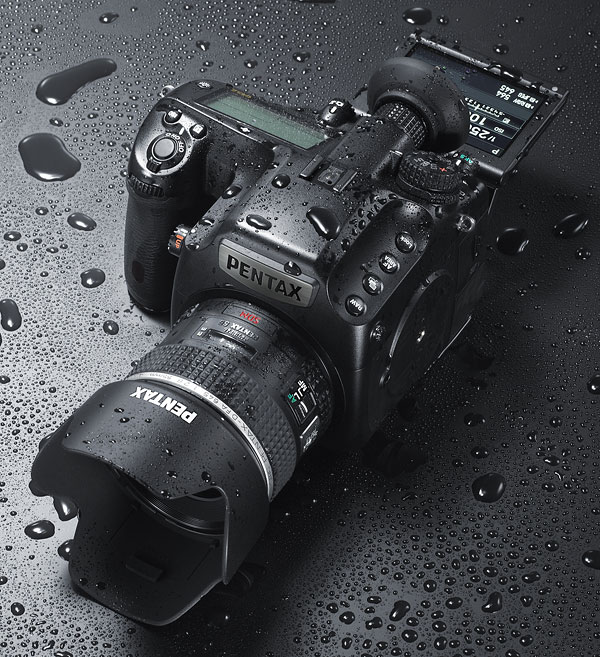
TA: Anyway, like I told you, to be an SLR is an advantage to our customer, I think. And so I would like the customer to enjoy that advantage. And so, yeah, we will concentrate also on being an SLR manufacturer.
DE: Maybe I'm putting words in your mouth, but it sounds like you see that there is a place in the market for that, and so from that and your continuing good sales, maybe it's safe for us to assume that's a business Pentax will continue to pursue.
TA: We would like to concentrate on the camera with prism.
DE: You see that really as Pentax’s market.
HS: Yes, yes. Optical finder.
DE: Yes, and that's a place in the market that nobody else is addressing, really. Good.
Moving on to the 645 lens roadmap, in early 2017 you teased two new 645-mount zooms, one that was a standard and one that was a tele zoom. They just said 2017 or later delivery. Now that 2018’s here, do you have any update on what the current status of those lenses is on the roadmap, when they might be coming? Or can you even confirm just the basic specs on those lenses?
HS: Regarding the 645 roadmap, nothing has been changed from the last time...
DE: Okay, so no new information.
HS: No new information.
DE: And then moving on to at the complete opposite end of sensor sizes, there's the Q-mount. The last new model there was about three and a half years ago, and we haven't seen any new Q-mount lenses for four years. And there was a telephoto macro that was on the roadmap that's no longer there. What's the status of the Q-series? Is that an ongoing product, or is that one that you've decided doesn't make sense for you anymore?
HS: Regarding the Q-series lens and body, since there was limited human resources for technological development, what we've done is just focus on the development of the K-series. And it is true that the Q-series are not the first priority within our range of products at the current moment. But sales of the Q-S1 and Q-mount lenses are still ongoing, so yeah, this is what we’re doing so at the current point.
DE: Yeah, you can only do so many things, and the K-series is where you're seeing the best returns. But the Q series is still being sold; is it still being manufactured, too?
TA: Manufactured. Currently we are manufacturing mainly for Q-mount lenses, and we are going to continue to sell Q mount lenses.
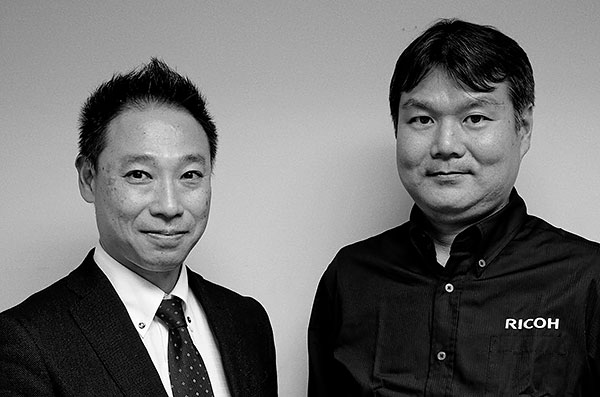
DE: So it sounds like the main thing that's happening there is you're selling Q-mount lenses to existing customers. It seems like that product really didn't get the success or the response that you hoped for, but what do you think was behind that? Was the sensor size just too small to give enough image quality or...?
HS: Actually, many Pentaxians love the Q products. They are very pleased with Q-series products, and they use the Q-series as the second camera besides their main cameras such as the K-3 or K-5 series. But unfortunately, many people other than Pentaxians, such as beginners, didn’t like the Q-series.
DE: Yeah.
HS: One reason is that Pentax brand itself is not a strong brand for beginner customers, because they don’t know the Pentax brand itself, actually. <laughs> So actually, for those broader customers, including beginners, the sales was not so good actually.
DE: So it was something that, for the Pentaxians, it had a lot of appeal. It was cute, and it was a second camera, but it wasn't able to reach outside of Pentaxians, yes.
HS: Yes.
DE: The GR series -- it’s what we have to take a picture of you with here -- that's had almost cult status. The people that like them are very into the GRs. So, again, where is that line going? We've heard it suggested that you're considering bringing your Ricoh cameras under the Pentax brand. Will Ricoh continue as a separate camera brand, or will it be brought under Pentax at some point, or will Pentax be brought under Ricoh...? Might we see a Pentax GR III one day?
HS: We don’t know why this kind of rumor has been spreading! Anyway, the GR is under Ricoh brand, and SLRs from Pentax brand. This will not be changed in the future.
DE: Mmm, they really have separate identities.
TA: Sure, sure, sure. For us we use the Ricoh brand for the compact camera such as GR and also the WG series, rugged design cameras for outdoors. And in the case of SLR, we use the Pentax brand. And also the binoculars.
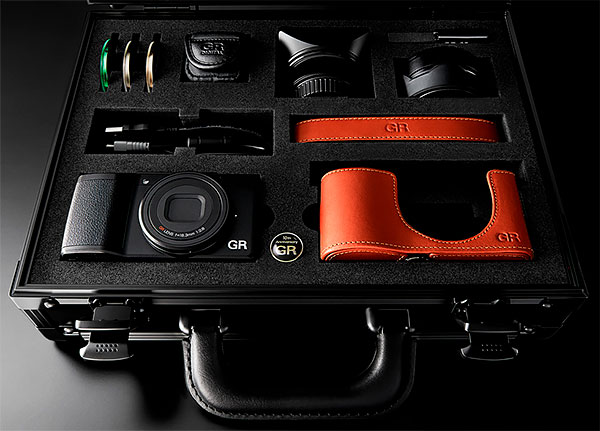
DE: I see. So they're sort of separate market segments, separate brands.
One area where you've had a lot of success under the Ricoh brand is the Theta series, and we've been fans of the Theta from the beginning. Again, Mike Tomkins especially, he made a big write-up on the Theta S. We felt from beginning that 360-degree capture is a very compelling reason why someone would buy a separate standalone little camera. You can't do it with your cell phone, you can’t do it with a regular camera, and I think it's a great memory keeping thing. If you go somewhere on a trip, take the 360, and it’s like “Oh look, the kids are doing that over there, and there’s this person over here...”
Now that the Theta V has been out for a few months, how is it being received in the market? Are people liking it, are you selling, up to your expectations for it?
HS: Yeah, the response for the Theta V [Ed. Note: interestingly, pronounced "Vee", not "Five"] series is quite good, especially the higher resolution which has not been offered from the previous series or even the competitors. So the response is quite good.
DE: Ah, so the 4k video, the higher resolution has been a big appeal.
HS: Also, the Theta V has a very good accuracy of the stitching, compared to other models, other brands. Very, yeah. That’s because since the original Theta consumer model, we have been continuously developing the stitching algorithm, so that if you compare this model with Theta, you can see that the Theta V has the greatest accuracy.
DE: Ah, that’s interesting. So that's really an advantage for you; you've got high resolution but also very good stitching.
HS: And also, we boast the 360-degree spatial sound with the four-channel microphone.
DE: This is in the Theta V?
HS: Yes, with the [Ed. Note: optionally-available] TA-1 3D Microphone accessory, you can also see and feel the stereo image, L channel and R channel, and the up and down channel, yeah. This is a spatial three-dimensional audio, yeah.
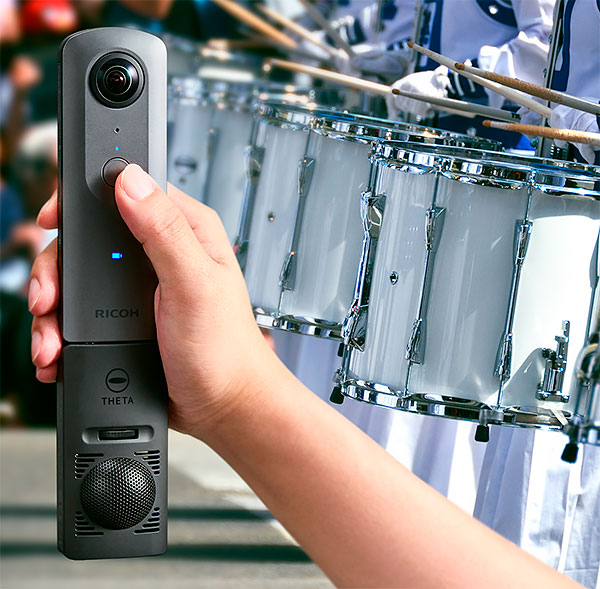
DE: Oh, how interesting! So in playback as you’re changing your viewpoint, the sound follows your view? Ah. Wow.
HS: Yes, and also you can feel the upper side or down-side sound.
DE: Oh wow! I have to try that. So I need to listen with headphones to...
HS: Yes, you can experience it in the booth.
DE: Oh! I will check that out. [Ed. Note: I did, and the effect was very striking; as I looked around with a VR headset and headphones on, the location of sound sources stayed fixed in space. One sample sequence was of a jet flying overhead and landing, and the feeling actually was that the jet was above me. It was pretty cool!]
HS: Yeah, it was an interesting feature for Theta V.
DE: And so, what you were so saying is that you were early in the market, you had early success with that. That allowed you to to keep investing in stitching quality, things like that.
TA: And also, the Theta V has the feature of 4K live streaming, yeah, live streaming. Yeah, many other competitors’ models have the same kind of 4K live-streaming function, but in the case of Theta V we have the advantage of very good stability from the point of temperature. If you continue to do live streaming, the [internal] temperature is getting higher and higher and some other brands only last 10 or 15 minutes.
DE: Oh, before it over heats?
TA: Yeah. We don't guarantee some time range for the heat stopping, but actually I think you can use the Theta V for over one hours, maybe two hours or less. It depends on the outside temperature...
DE: ...but on average you can run for an hour with it.
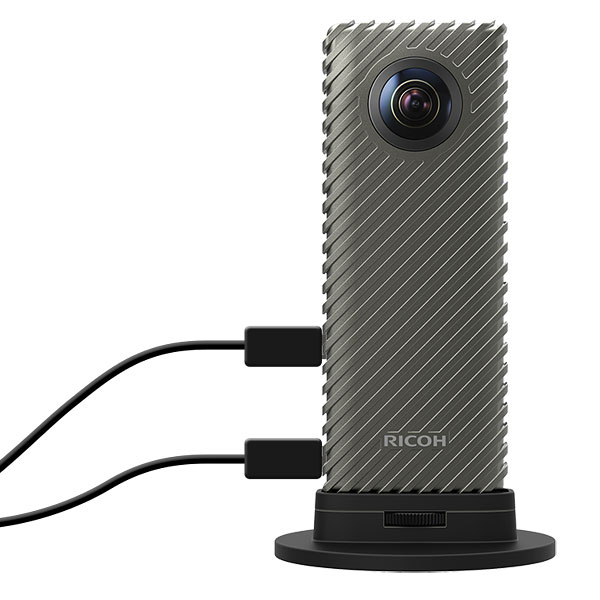
TA: And also, we have the Ricoh R Development Kit series, this is a kind of 360-degree camera based on the Theta S series. It has a heatsink around the body so you can use it for over 24 hours.
DE: Yeah and do you sell those? They’re consumer products or are they commercial?
TA: Actually, not consumer but broadcasting purposes or something.
DE: And what do you call that line? The Theta R?
TA: Not Theta; Ricoh R development kit. Why development? That’s because it’s not a consumer product, but for professionals such as broadcasting or live-streaming area. It’s a development kit for the software development or system developers.
DE: And so, is there an API or something, a software API that you can control the camera and interface?
TA: Yes. We’re hoping that some software developers develop some kind of system for 360-degree cameras using the Ricoh R series, so we released the camera for those kinds of developer or system integrators or broadcasters.
DE: Yeah. And you say that's based on the Theta S hardware, which is partly why it needs big heat sinks I guess, because the Theta V...
TA: Yes. Unfortunately, the Theta S-series, as you know, is 2K video, not 4K. But actually, the 4K 360-degree video image is very huge, so that currently using the 4G [cellular network] environment, you can't transfer because of huge...
DE: There’s not enough bandwidth with 4G, you have to wait for 5G cellphones.
TA: Yeah, you can see the 4K live-streaming image in our booth currently with Theta V, but we use only three cable connections to transfer the bits.
DE: Yeah. We were very impressed that you could get two cameras capable of 4K into such a tiny case. Was the thermal management the biggest challenge to get that?
TA: Yes, yes.
DE: Yeah, not just to be able to dissipate the heat, but to keep very low power dissipation, so you had less heat to deal with, to start with.

HS: Yeah. But actually at the last CES, in Las Vegas, some other manufacturers got together to develop some kind of a successor to the Ricoh R DK series with the 4K video function. So we exhibited some reference model, as Ricoh RD Kit successor. But that’s not our product but as another brand, but we are cooperating with that manufacturer, yeah.
DE: Okay, we’ll have to look up and see them, I guess!
We're impressed by your commitment to supporting the Theta V post-sale with regular, major updates planned and in some cases already delivered for firmware and the Theta app.
HS: Yes, as we know that we announced the plan of the firmware update for the Theta V and also the update schedule for the application. Feedback from customers was very positive to our announcing the next generation feature for the current product. And today, we released some new firmware for the Theta V series that includes a function where we can use USB memory as external memory with the Theta V.
DE: So, you can take the USB memory stick and then plug it in?
HS: Yes, and transfer the data to the USB memory
DE: And so is that to, only to offload or can you record live onto USB?
HS: Yeah, actually it’s only to transfer to USB memory, yeah.
DE: For copying, hai. But it makes it easy. You don’t need a computer, you can just plug it in and you're ready to go. So the response was so positive to having a specific firmware roadmap, do you think you might then start to do that for still cameras also, to tell people this is what we're going to do?
TA: In the case of K-series cameras, it might be difficult, but we are going to consider to do those kinds of same thing.
DE: It seems like it’s harder to do with traditional cameras, maybe, than with the Thetas.
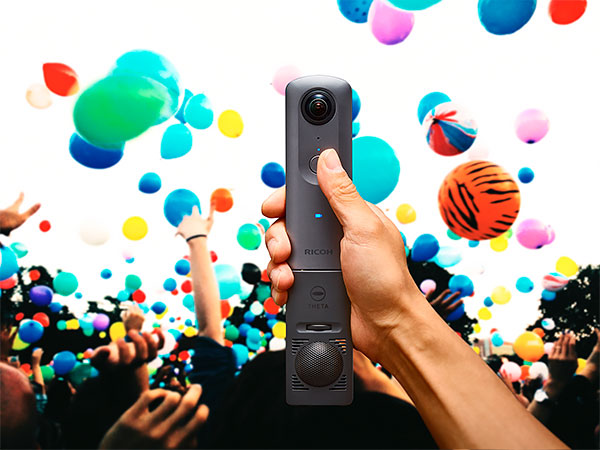
TA: But anyway the manufacturing policy is somehow different from the Theta series to cameras like the K-series, so that somehow when we launch the product. The thinking of traditional photographers is that the cameras should be already completed, but products like digital gadgets can be updated even after we’re launching it.
DE: Ah, I get it - the Theta is more like a gadget mindset, it's like "I have it now and later it’ll do something else", but a photographer wants it to do everything right from the starrt.
TA: Maybe there should be some overlapping point, but...
DE: Ah, yeah, very interesting. Ah, we're out of time, and I think that's actually all of our questions! Thank you very much!
Summary
This was really a rather interesting interview. Here are some of the main takeaways I saw:
-
The Accelerator Unit improves noise levels across the board: A lot of digital noise reduction processing apparently happens in the Accelerator, freeing up main-CPU processing power for improved algorithms there as well. The result is that Ricoh predicts an improvement in noise levels across the sensitivity range, not just at higher sensitivities. (And now that it's available in the K-1 II, Pentax KP owners will no longer be able to boast of better high ISO image quality than that available from the brand's full-frame flagship ;-)
-
The K-1 II also brings some handy AF improvements: One area in which we're guessing that Ricoh used the extra horsepower freed up by the Accelerator Unit was in its autofocus system: The company tells us that the Pentax K-1 II will now track subjects better than before. It's still using data derived both from the autofocus system as well as the 86,000-pixel RGB metering sensor, but it now makes better use of that data to determine subject motion. The autofocus hold function has also been improved, and now takes account of focal length when determining how long it should wait before abandoning an AF hold.
-
Patent planned for Pentax's handheld, multi-shot high-res capture: How Dynamic Pixel Shift Resolution works is still under wraps, but we now know that Ricoh intends to seek patent protection for its underlying technology (or quite possibly has already done so). We also now know that it relies on hardware specific to the K-1 II, and uses the mechanical shutter, not the electronic one as in standard Pixel Shift Resolution. That's done to avoid issues with rolling shutter (aka jello effect) associated with electronic shutter.
-
The K-1 II upgrade was planned from the start: How's this for forethought? Ricoh knew it had the potential for an image quality boost with the Accelerator Unit it was developing for the Pentax KP, but it also knew it wouldn't be ready in time for the launch of the K-1. So it created the two products in parallel with each other, designing its new full-frame flagship with both current and future tech in mind. The intention from the get-go was to allow K-1 owners to upgrade their cameras, letting them take advantage of the newer tech once it became available. (And perhaps letting Ricoh reduce the cost upgrading each camera, too, since its internals were designed with that upgrade in mind.) Very cool!
-
We will see a new APS-C flagship, but it probably won't look like the K-3: We'd been quietly concerned for a while now that Ricoh might have decided to focus its enthusiast and pro-friendly offerings on full-frame, as it's been almost five years since we saw much activity at the top of its APS-C lineup. It's lens development activity of late has also predominantly been full frame-oriented, although that's largely been out of necessity, since the company was reentering the full-frame market after a very lengthy absence.
Turns out, we needn't have worried. We were very pleased to hear Ricoh reaffirm a strong commitment to both APS-C and full-frame. The company also confirmed that development is underway on a new APS-C flagship for the K-series as we speak, and that once full-frame lens development catches up, we should start to see more APS-C lens development again.
But perhaps most interestingly of all, Arai-san hinted that it won't be another evolution of the existing K-3 series design, which dates all the way back to 2009's Pentax K-7. Instead, Arai-san primed us to expect a new flagship that "wouldn't be a straight successor of the K-3".
-
Long lives the Queen: We'd long assumed that Ricoh had pulled the plug on the tiny, cute and yet sadly underloved Pentax Q-series, which played Queen to the K-mount's King in the interchangeable-lens market. Hands-down the smallest mirrorless cameras we've ever reviewed, we loved the Q-series for their incredible compactness, but understood when photographers shied away from an unfamiliar brand and a far smaller sensor than in other mirrorless rivals.
But Ricoh surprised us by revealing that while its not currently developing anything for the Q-series, it hasn't yet dropped the curtain either. In fact, the company told us that it's actually still manufacturing new Q-mount lenses as we speak, and the Q-S1 remains on sale in some markets, too. So while the Queen might be on life support, she lives on nevertheless!
-
Don't expect a medium-format mirrorless camera: We already suspected as much, but Ricoh also reaffirmed its commitment to the pentaprism viewfinder while discussing recent mirrorless rivals in the medium-format space. That might not quite be the same thing as saying that it won't make a mirrorless medium-format model, but it's as close as we're going to get to it.
-
Enough with the "No more Ricoh" / "No more Pentax" rumors: You heard it here folks. Can this be an end to the rumors once and for all, please? Ricoh once again confirmed its commitment to both of its brands in the digital imaging space. Interchangeable-lens cameras will keep the Pentax brand. Fixed-lens cameras stick with the Ricoh brand. That's not changing, regardless of what the rumor mill says.
What do you think? Please share your thoughts in the comments below!